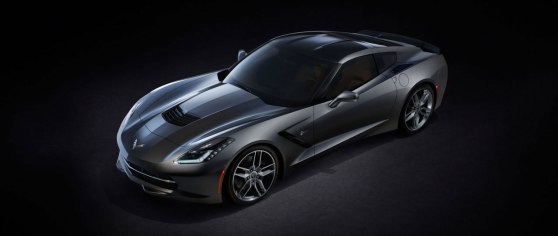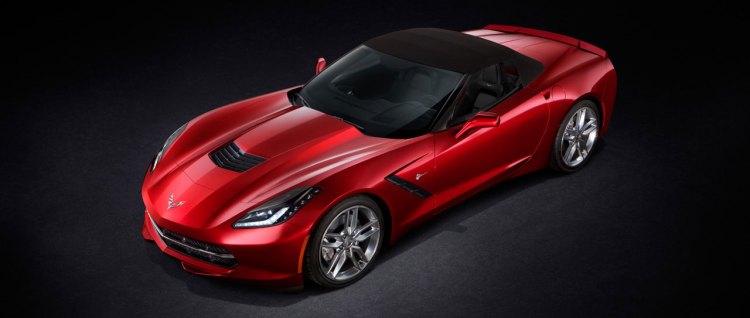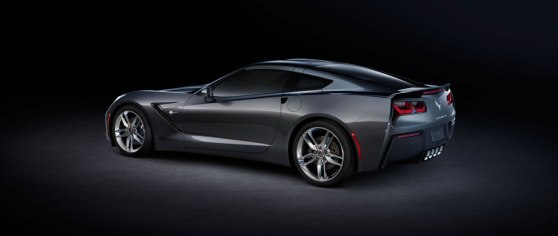Want smarter insights in your inbox? Sign up for our weekly newsletters to get only what matters to enterprise AI, data, and security leaders. Subscribe Now
You knew the launch of the first Corvette to bear the Stingray badge of honor since 1976 would be a big deal in social media. The Corvette, after all, is America’s iconic, beautiful, and above all powerful sports car.
But our ADHD-fueled social media attention spans are notoriously short.
So how do you drive 87 million social media impressions over extended weeks and months? With a detailed plan, Chevy’s director of digital Andrew Dinsdale told me last week.
And, apparently, with a lot of mystery.

“Initially, we revealed just the crossed flags … we didn’t a show a thing of the car except some teases and a camouflaged test drive,” Dinsdale told me in his strong English accent. “We achieved the highest virality we’ve ever seen.”
That is, of course, the glory of working on a project like this. Everyone who cares about cars, or at least sports cars, is interested in the new Corvette. It’s a classic car with great heritage, and the upcoming 2014 version is lighter, faster, sexier — designed to compete with top-of-the-line European sports cars — and even gets better fuel mileage.
So on the one hand, social media for the Stingray was the easiest job ever.
“We could have done the worst plan possible and still won a lot of attention … this is an easy car to create buzz around,” Dinsdale said. “But if you want to make it last and take full advantage of the buzz you get, you have to have the people in place … and content.”
 But taking the typical one-day or weekend social splash and spreading it over months requires planning and hard work, Paul Gazda of iProspect says. iProspect, which was the agency Chevy chose for the launch, created a five-stage reveal stretching from November to December that drove 87 million Twitter impressions, five million video views, achieved a massive Twitter engagement rate of 57 percent, and drove Chevy to AdAge’s No. 1 trending brand.
But taking the typical one-day or weekend social splash and spreading it over months requires planning and hard work, Paul Gazda of iProspect says. iProspect, which was the agency Chevy chose for the launch, created a five-stage reveal stretching from November to December that drove 87 million Twitter impressions, five million video views, achieved a massive Twitter engagement rate of 57 percent, and drove Chevy to AdAge’s No. 1 trending brand.
That includes 170,000 people watching a livestream of the Detroit reveal in mid-January — on the same night as the Golden Globes, a NFL playoff game, and news breaking about the NHL strike ending. All that with a budget just a fraction of what Chevy typically spends on a car launch campaign.
“We never share what we spend,” Dinsdale says. “But compared to the Silverado reveal this week, which we did all-out with TV advertising, it’s one-fifteenth as much, all told. It’s relatively a cheap date … it’s about being very effective.”
The most effective piece, Dinsdale says, was a YouTube homepage takeover, which drove massive video views and also Chevy’s best-ever click-through rate back to Chevy.com. And on Super Bowl Sunday, Chevy paid a flat fee for the “first watch” skippable ads on YouTube, which most people typically click through after five seconds.
“But people didn’t skip this one,” Dinsdale told me. “Not even a real ad … we had millions of views.”
Just because it was social, however, and about a very hot sports car, the campaign wasn’t free. The plan definitely included paid media to kickstart, to amplify, and to extend the conversation. That included the homepage takeover on YouTube, a promoted trend on Twitter, a promoted tweet, and Chevy’s Twitter account being promoted as well. In addition, iProspect seeded key YouTube videos with audiences who are interested in cars as well as with bloggers.
“You can build the greatest content and put it online, but unless you make people aware of it, it doesn’t get noticed,” Dinsdale says. “You pay to get the initial impression, and you hope people are engaged enough to stay and watch and share.”
It’s also about preparation.
For a time after the launch, Stingray was the fifth-trending search on Google, and millions of people were clicking through to Chevy’s website, interested in learning more, seeing more — and in some cases, signing up to buy one.
“We built this massive awareness, and then when people were looking, we were there with the right content,” Dinsdale said. “People are so voracious for this content, they’re clicking around to see this car.”
I wondered aloud how all this social chatter turned into sales.
“That’s not a business problem,” Dinsdale said confidently. “People put their orders in … at the airport just recently I met a young guy who said, ‘I’m No. 19 in line.’ Our problem is not this year — our challenge is next year. These people we touched in January or February … how are we going to back to them next year?”
But that, of course, is a problem for the 2015 model.




